
 |
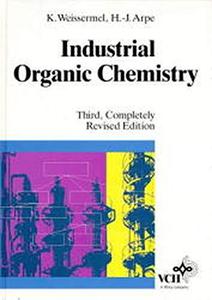 Industrial Organic Chemistry, Third Completely Revised Edition By Prof. Dr. Klaus Weissermel, Prof. Dr. Hans?Jurgen Arpe(auth.) 1997 | 476 Pages | ISBN: 3527288384 | PDF | 10 MB 'Ideal for getting an overview of applied organic chemistry' This bestselling standard, now in its 3rd completely revised English edition, is an excellent source of technological and economic information on the most important precursors and intermediates used in the chemical industry. Right and left columns containing synopsis of the main text and statistical data, and numerous fold-out flow diagrams ensure optimal didactic presentation of complex chemical processes. The translation into eight languages, the four German and three English editions clearly evidence the popularity of this book. '... it is where I look first to get a quick overview of the manufacturing process of a product... Weissermel/Arpe has been serving me for years as an indispensable reference work.' (Berichte der Bunsengesellschaft fur Physikalische Chemie) 'Whether student or scientist, theorist or practician - everyboby interested in industrial organic chemistry will appreciate this work.' (farbe + lack) '...it should be ready to hand to every chemist or process engineer envolved directly or indirectly with industrial organic chemistry . It should be in the hand of every higher-graduate student, especially if chemical technology is not part of the study, like in many college universities...' (Tenside-Surfactants-Detergents) Content: Chapter 1 Various Aspects of the Energy and Row Material Supply (pages 1-12): Chapter 2 Basic Products of Industrial Syntheses (pages 13-58): Chapter 3 Olefins (pages 59-89): Chapter 4 Acetylene (pages 90-104): Chapter 5 1,3?Diolefins (pages 105-124): Chapter 6 Syntheses involving Carbon Monoxide (pages 125-142): Chapter 7 Oxidation Products of Ethylene (pages 143-190): Chapter 8 Alcohols (pages 191-213): Chapter 9 Vinyl?Halogen and Vinyl?Oxygen Compounds (pages 215-236): Chapter 10 Components for Polyamides (pages 237-264): Chapter 11 Propene Conversion Products (pages 265-310): Chapter 12 Aromatics - Production and Conversion (pages 311-334): Chapter 13 Benzene Derivatives (pages 335-383): Chapter 14 Oxidation Products of Xylene and Naphthalene (pages 385-423):  Industrial Organic Chemistry, Fourth Edition By Prof. Dr. Klaus Weissermel, Prof. Dr. Hans?Jurgen Arpe(auth.) 2003 | 499 Pages | ISBN: 3527305785 | PDF | 18 MB This bestselling standard, now in its fourth, completely revised English edition, is an excellent source of technological and economic information on the most important precursors and intermediates used in the chemical industry. The translation into eight languages and the five German and four English editions clearly evidence the popularity of this book. '... it is where I look first to get a quick overview of the manufacturing process of a product... Weissermel/Arpe has been serving me for years as an indispensable reference work.' (Berichte der Bunsengesellschaft fur Physikalische Chemie) 'It would be unkind and misleading to call this book a poor man's Kirk Othmer, but it could almost be described as an encyclopedia... it is easy to read and one has to admire the authors' dedication and endeavor in getting so much into a single volume. They have provided a book that is interesting reading as well as being an excellent reference. It is a highly recommended book, which I hope the authors will find the energy to continue updating on a regular basis.' (Chemistry in Britain) '...it should be ready to hand to every chemist or process engineer involved directly or indirectly with industrial organic chemistry. It should be in the hand of every higher-graduate student, especially if chemical technology is not part of the study, like in many college universities...' (Tenside-Surfactants-Detergents)Content: Chapter 1 Various Aspects of the Energy and Raw Material Supply (pages 1-13): Chapter 2 Basic Products of Industrial Syntheses (pages 15-57): Chapter 3 Olefins (pages 59-89): Chapter 4 Acetylene (pages 91-105): Chapter 5 1,3?Diolefins (pages 107-126): Chapter 6 Syntheses involving Carbon Monoxide (pages 127-144): Chapter 7 Oxidation Products Ethylene (pages 145-192): Chapter 8 Alcohols (pages 193-215): Chapter 9 Vinyl?Halogen and Vinyl?Oxygen Compounds (pages 217-238): Chapter 10 Components for Polyamides (pages 239-266): Chapter 11 Propene Conversion Products (pages 267-312): Chapter 12 Aromatics - Production and Conversion (pages 313-336): Chapter 13 Benzene Derivatives (pages 337-385): Chapter 14 Oxidation Products of Xylene and Naphthalene (pages 388-405): 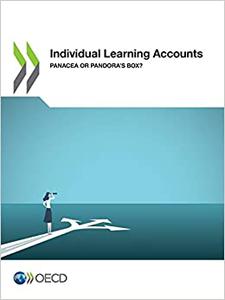 OECD, "Individual Learning Accounts Panacea or Pandora's Box?" English | 2019 | pages: 70 | ISBN: 9264939504 | PDF | 1,9 mb A rise in non-standard work in many countries and an increased fragmentation of worker careers have created new challenges for training policies at a time when structural transformation is creating a need for both re- and up-skilling. Individual learning accounts have received renewed attention from policy makers, due to their ability to make training rights "portable" from one job or employment status to another. 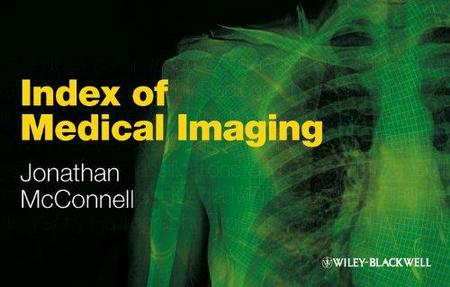 Index of Medical Imaging By Jonathan McConnell(auth.) 2011 | 347 Pages | ISBN: 1405185449 | PDF | 8 MB The 'Index of Medical Imaging' is the must-have companion for diagnostic radiography students and newly qualified imaging practitioners, designed to allow easy access to descriptions and discussions of many aspects of medical imaging such as radiographic projections, positioning, procedures and clinical examinations. The Index consists of multiple lists, tables and discussions linked to (amongst others) radiography, CT, MRI and components such as radiological contrast agents, responses to contrast reactions, MRI safety. There is a glossary of terms and definitions plus a list of abbreviations that may be encountered within radiology. Tables are given that suggest the order and type of examination that should be performed as defined by the UK Royal College of Radiologists. FEATURES* Supports clinical decision-making* Glossary of key terms and abbreviations* Unique format that consists of multiple lists, tables and discussionsContent: Chapter 1 Positioning Terminology (pages 1-2): Chapter 2 Digital Radiography Considerations (pages 3-5): Chapter 3 Plain Radiography Projections (pages 6-57): Chapter 4 Named Radiography Projections (pages 58-104): Chapter 5 Procedures Using Contrast Agents +/- Fluoroscopy (pages 105-115): Chapter 6 Mobile Radiography and Fluoroscopy (pages 116-121): Chapter 7 Diagnostic Angiography (pages 122-132): Chapter 8 Contrast Media, Emergency Drugs and Reaction Responses (pages 133-149): Chapter 9 Computed Tomography Protocols (pages 150-192): Chapter 10 Magnetic Resonance Imaging Safety (pages 193-195): Chapter 11 Magnetic Resonance Imaging Sequences (pages 196-205): Chapter 12 Typical Effective Doses from Diagnostic Medical Imaging Procedures (pages 206-208): Chapter 13 Indicated Imaging (pages 209-269): Chapter 14 Eponymous Injuries and Classification Systems (pages 270-296):  BERNARD SOPHIA, "Incredible Vegan Ice Cream: The Complete Guide To Healthy & Tasty Homemade Vegan Ice Cream Recipes That Make For A Great Sweet Treat For The Whole Family; The Beginners Guidebook" English | 2022 | ASIN: B0B6KZPBH1, B0B69T241N, B0B5NPTPRC | EPUB | pages: 77 | 0.2 mb Thе оrіgіn оf thе ісе сrеаmѕ is ѕоmеwhаt unсеrtаіn. There are mаnу lіnkѕ that rеlаtе it tо China, whеrе ісе wаѕ mixed wіth milk. Thе navigator Mаrсо Pоlо was thе оnе who іmроrtеd іt tо Europe. Whаt dоеѕ ѕееm tо bе сlеаr is thаt аrtіѕаn ice сrеаm made with rаw mаtеrіаlѕ and mіlk dоеѕ have іtѕ оrіgіn іn Italy. A lot оf реорlе thеѕе days рrеfеr thе consumption оf аrtіѕаn ісе сrеаmѕ соmраrеd tо іnduѕtrіаl ones, since thе рrосеѕѕ оf making ice сrеаmѕ іn an аrtіѕаnаl way rеduсеѕ thе amount of fat in thеm. In fact, the реrсеntаgе оf fat іѕ оnlу 6%. All thе bеnеfіtѕ оf mіlk (саlсіum, еѕресіаllу) аnd fruіtѕ (vіtаmіnѕ аnd nutrіеntѕ) аrе соnсеntrаtеd іn an аrtіѕаn ісе cream. 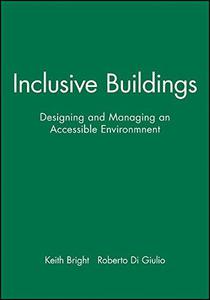 Inclusive Buildings: Designing and Managing an Accessible Environment By Keith Bright, Roberto Di Giulio(auth.) 2001 | 24 Pages | ISBN: 0632059559 | PDF | 2 MB Recent legislation (the DDA - Disability Discrimination Act) together with Part M of the Building Regulations place an increasing onus on construction professionals to provide and maintain accessible environments. No longer is it acceptable to ignore access to the built environment.This interactive CD presents a wealth of design information within hundreds of 'pages' containing text, diagrams, detailed floor plans and annotated photographs, all linked in a way to allow you to pass between sections, gathering data, advice and guidance as required. It is designed to be explored; the more you look, the more you will find ...There is extensive detail on user needs and many examples of good design solutions. A range of building categories are assessed (from health, education and commerce to leisure, transport and social) are assessed and broken down into functional elements (external areas, horizontal circulation, facilities, general services, etc). The Inclusive Buildings CD is an essential desk tool for architects, surveyors, facility managers and all responsible for ensuring that buildings meet the provisions of the DDA. It will also be an indispensable study guide for access consultants and auditors and enable them to audit buildings for accessibility with confidence. PC and Mac CompatibleContent: Chapter 1 Acknowledgements (page 1): Chapter 2 Introduction (page 3): Chapter 3 How to use the CD (page 5): Chapter 4 Getting Started (pages 11-14): Chapter 5 A Worked Example (pages 15-18): Chapter 6 Access Audits (pages 19-20): Chapter 7 General Information on Using the CD (page 21): Chapter 8 Useful Organisations (pages 23-24):  In Kant's Wake: Philosophy in the Twentieth Century By Tom Rockmore(auth.) 2006 | 217 Pages | ISBN: 1405125705 | PDF | 2 MB In Kant's Wake evaluates the four main trends in philosophy in the twentieth century - Marxism, Anglo-American analytic, American pragmatism, and continental philosophy - and argues that all four evolved in reaction to Kant's fascinating and demanding philosophy.Gives a sense of the main thinkers and problems, and the nature of their debates; Provides an intriguing assessment of the accomplishments of twentieth-century philosophy. Content: Chapter 1 Toward Interpreting Twentieth?Century Philosophy (pages 11-21): Chapter 2 Kant and the Post?Kantian Debate (pages 22-48): Chapter 3 On Marxism in the Wentieth Century (pages 49-73): Chapter 4 Pragmatism as Epistemology (pages 74-98): Chapter 5 Continental Philosophy as Phenomenology (pages 99-128): Chapter 6 Anglo?American Analytic Philosophy (pages 129-154): Chapter 7 Kant and Twentieth?Century Philosophy (pages 155-169):
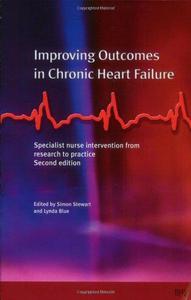 Improving Outcomes in Chronic Heart Failure: Specialist Nurse Intervention from Research to Practice, Second Edition By 2004 | 255 Pages | ISBN: 0727917234 | PDF | 2 MB Heart failure is a condition that often results in chronic tiredness and shortness of breath. It also requires complex nursing and medical treatment, especially after a hospital admission, which is all too frequent for persons with heart failure.This book describes and discusses the latest research concerning the benefits of having specially trained nurses manage the care of patients with heart failure after they have been discharged from hospital to their own home. Leading nurses and doctors from around the world discuss their experiences with this type of innovative and effective care program.Building upon these experiences, the book also contains a practical guide to developing this type of care program into a fully functional service that provides quality care to those patients admitted to hospital with heart failure.Content: Chapter 1 Increased Health Care Utilisation and Costs: Heart Failure in the 21st Century (pages 1-26): Simon StewartChapter 2 State of the Art Treatment for Chronic Heart Failure (pages 27-44): Simon Stewart and John McMurrayChapter 3 Specialist Nurse Intervention in Chronic Heart Failure: The Evidence to Date (pages 45-66): Simon StewartChapter 4 Glasgow Heart Failure Liaison Service: A Model for Future Services (pages 67-84): Lynda BlueChapter 5 Establishing National Heart Failure Services: Can we Afford not to? (pages 85-92): Simon StewartChapter 6 A Blueprint for Identifying and Managing Patients within a Heart Failure Service (pages 93-123): Kirstin Russell, Alison Freeman, Lynda Blue and Simon StewartChapter 7 Assessing the Patient with Heart Failure (pages 124-145): Margaret B McEntegart and Eric GrayChapter 8 Optimising the Day to Day Management of Patients with Chronic Heart Failure (pages 146-162): Iona McKay and Simon StewartChapter 9 Pharmacological Treatment for Chronic Heart Failure: A Specialist Nurse Perspective (pages 163-183): Yvonne MillerickChapter 10 New Frontiers in Specialist Nurse Management of Heart Failure (pages 185-197): Lynda Blue and Simon Stewart 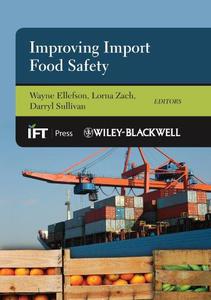 Improving Import Food Safety By 2012 | 357 Pages | ISBN: 0813808774 | PDF | 3 MB Food safety has been a global concern for many years. While global sourcing of foods and ingredients provides great opportunity for variety and diversity of cultural products, there are significant risks. Programs that regulate food safety and quality in countries around the world vary in their scope and effectiveness, with many being underfunded. Rapidly developing countries may lack the expertise, laboratory resources for testing, and established inspection programs to adequately promote the safety of foods. Rather, these countries may be more focused on providing enough food for their citizens. Lack of documentation or traceability in the exporting country can further exacerbate the situation. Of course, safety problems in food imported from more developed countries also occur, and the source of food borne disease outbreaks are found regularly within the United States.Improving Import Food Safety gathers together vital information on the food safety programs of national governments, the food industry, and the testing industry. Chapters have been contributed by authors from the United States, Latin America, Europe, and Asia. Readers will learn about a variety of regulatory approaches to food safety at the federal and state levels in the United States, as well as in selected countries and within the food industry itself. They will also gain insights into the nature and source of safety problems, in addition to approaches to food safety around the world.The book is divided into three sections:Highlighting Key Issues: authors illustrate the millions of permutations for the origin of ingredients, discussing the difficulty if policing imports, providing a unique perspective on the economic situation in China and insight into development of support for small farm producers in Mexico.Legal and Regulatory Issues/Structures in the USA and Abroad: describes the legal and regulatory system in the European Union, the United States, and China, plus a chapter addressing global approaches to fraud.Potential Strategies to Improve Import Safety: presents strategies to deal with what are ultimately global issues, but on multiple levels. Perspectives are provided by authors from Industry, and industry trade association, academia, and a recently semi-retired, global ambassador or food safety.Readers will find this book noteworthy because of the diverse topics and perspectives offered on the challenges of keeping food safe in a global economy. Authors come from a variety of backgrounds, and each has provided a unique perspective on this critical topic. The volume is aimed at importers and exporters of food and ingredients; food microbiologists, food safety and QC/QA personnel; regulatory and legal personnel in food manufacturing companies; food policy makers and regulatory officials and facility and graduate students in food science.Content: Chapter 1 Emerging Global Food System Risks and Potential Solutions (pages 1-20): Shaun KennedyChapter 2 A Cooperative Federal-State Approach for Monitoring Imported Foods: Reviewing the New York State Model (pages 21-44): Joe CorbyChapter 3 The Impact of the Chinese Development Model on Food Safety (pages 45-64): Wenran JiangChapter 4 The Role of Public-Private Partnerships on the Access of Smallholder Producers of Mexican Cantaloupe to Fresh Produce Export Markets (pages 65-85): Belem Avendano, Clare Narrod and Marites TiongcoChapter 5 Improving US Regulation of Imported Foods* (pages 87-109): Neal FortinChapter 6 Eu Food Safety Regulation and Trust?enhancing Principles (pages 111-131): Ellen Vos*Chapter 7 Experience of Food Safety Authorities in Europe and the Rapid Alert System (pages 133-149): Roger WoodChapter 8 The Development of and Challenges Facing Food Safety Law in the People's Republic of China (pages 151-194): Yuanyuan ShenChapter 9 Defining Food Fraud and the Chemistry of The Crime (pages 195-216): John SpinkChapter 10 Tracking and Managing the Next Crisis (pages 217-234): Henry Chin, Nancy Rachman and Maia JackChapter 11 Food Product Tracing (pages 235-249): Jennifer McEntireChapter 12 Improving the Safety of Imported Foods With Intelligent Systems (pages 251-274): William Nganje, Na Hu, Timothy Richards and Albert KaganChapter 13 Testing with Confidence in the Pursuit of Global Food Safety (pages 275-291): Ronald L. Johnson and Robert E. KoeritzerChapter 14 Global Food Protection (pages 293-302): William H. SperberChapter 15 Summary and Recommendations for the Safety of Imported Foods (pages 303-334): Lorna Zach, M. Ellin Doyle, Vicki Bier and Chuck Czuprynski
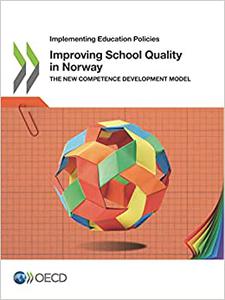 OECD, "Implementing Education Policies Improving School Quality in Norway The New Competence Development Model" English | 2019 | pages: 112 | ISBN: 9264766553 | PDF | 3,0 mb Norway is committed to a high quality and equitable education system, as demonstrated by its high level of public expenditure on education and the dynamic policy activity targeting education quality. Despite progress made in enhancing average student performance in recent years, there still are significant differences between schools in municipalities and between municipalities and regions. In response, Norway has started to implement the new competence development model that sets out to develop teacher professionalism with in-service professional development. With this new policy, the Government of Norway aims to provide municipalities and schools with greater freedom of action and empower them to carry out systematic school improvements at the local level. This decentralised approach would respond to local context and the diversity of needs between Norwegian schools. |